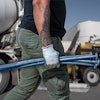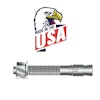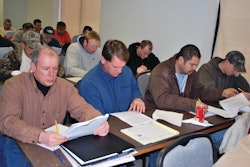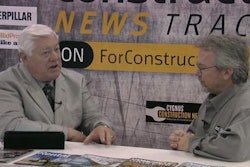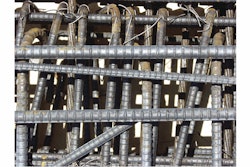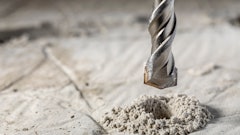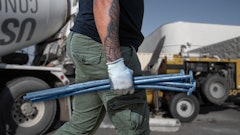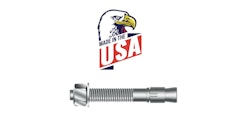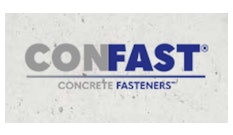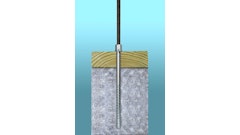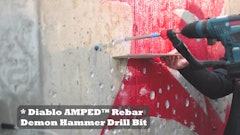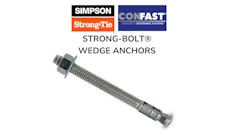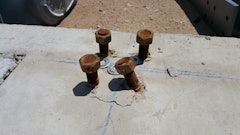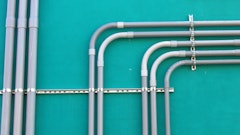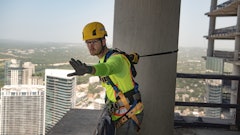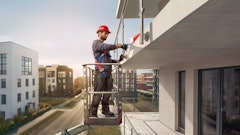You may have been installing adhesive anchors for 20 years without a problem. And you may install anchors for another 20 years without a problem. New ACI 318 Code requirements, however, will make installing anchors a bit more challenging. ACI 318-11 requires that "Anchors shall be installed by qualified personnel in accordance with the contract documents" and "Installation of adhesive anchors shall be performed by personnel trained to install adhesive anchors."
The Commentary in this section discusses both cast-in-place and post-installed anchors but leaves unclear the definition of qualified personnel and whether it applies to all anchors. Later in the document ACI does make it clear that "Installation of adhesive anchors horizontally or upwardly inclined to support sustained tension loads shall be performed by personnel certified by an applicable certification program."
Are you ready to be qualified? Are you ready to be certified? The American Concrete Institute (ACI)-Concrete Reinforcing Steel Institute (CRSI) adhesive anchor certification is a two-day program that costs about $500 per person plus any travel expenses. Contractors will need to decide how many laborers need to be qualified or certified. A major factor in choosing laborers — whether they are full-time or seasonal employees — will impact your long-term costs of certification. Also, finding a ACI-CRSI certification program near you may not be easy as there are currently only a few training and testing sessions in the United States planned for the remainder of 2013.
The following information will assist contractors in deciding how to handle these new anchor requirements.
Certification requirements
The ACI-CRSI Adhesive Anchor Installation Certification Program requires anchor installers to demonstrate an ability to read, comprehend and execute instructions for properly installing adhesive anchors in concrete. To demonstrate this ability they must:
- Pass a 90-minute, closed-book, written examination comprised of 75 multiple-choice questions, and
- Pass a performance examination by successfully installing adhesive anchors in a vertical down and vertical up position.
Installers must be recertified every five years by successfully completing both the written and performance examinations.
The installer must possess knowledge and ability in several areas that include the following:
- Understanding relevant jobsite conditions for correct selection of installation procedures in accordance with adhesive anchor manufacturer’s instructions
- Understanding the manufacturer’s instructions and using proper procedures, sequence and tools to clean the holes that receive anchors
- Properly selecting and assembling adhesive injection equipment
- Injecting adhesives to the proper depth in holes at various orientations
- Recognizing time limits for installing and positioning anchor elements
- Knowing how to protect anchor threads from contamination by the adhesive
- Securing anchor elements from loading or movement during the adhesive cure
Questions contractors have already asked
On which projects are certified installers required?
To determine if certified installers are required on a project check the Structural Notes, usually Sheet S1 of the drawings, to see if the Design Criteria lists either ACI 318-11 or IBC 2012. If either of these documents is listed, installer certification is required by the contract documents. Thus they have the potential to be enforced.
The Engineer of Record (EOR), however, may insert language in the Specifications or in the Structural Notes that also require certified installers for adhesive anchors as a specific requirement.
Who is policing this certification requirement?
In theory it should be the Independent Test Lab (ITL) and the EOR because ACI 318-11 requires continuous inspection as shown below. No drilling and installing of adhesive anchors should occur unless an inspector is observing the installers’ procedures. The inspector is to issue a report to the EOR for these anchor installations, and thus the EOR will also be involved.
These requirements are summarized as follows in Section D.9.2.4 of ACI 318-11.
“Adhesive anchors installed in horizontal or upwardly inclined orientations to resist sustained tension loads shall be continuously inspected during installation by an inspector specially approved for that purpose by the building official. The special inspector shall furnish a report to the licensed design professional and building official that the work covered by the report has been performed and that the materials used and the installation procedures used conform with the approved contract documents and the Manufacturer’s Printed Installation Instructions (MPII).”
Do all adhesive anchors require a certified installer?
No. As stated above, only adhesive anchors installed horizontally or upwardly inclined to resist sustained tension loads require a certified installer. Adhesive anchors installed vertically down, for instance when a wall or column dowel bar is missing, should not require a certified installer. If an adhesive anchor is installed horizontally for shear, a certified installer should not be required because that anchor does not resist sustained tension loads. However, only EORs will be able to make such a decision and they might not be willing to make a decision. Thus contractors should consider using a certified installer for all horizontal or upwardly inclined adhesive anchors.
Can workers install the anchors in a manner differing from that stated in the MPII?
Yes, but the contractor should get a form of permission prior to installing the anchors. Read the MPII and determine whether you need or want to do anything differently. You will need to get that variance in writing from the manufacturer and approved by the EOR prior to installing the anchor.
Based on the preceding information, contractors’ costs for anchor installation will increase and maintaining certified personnel will probably be a continuing activity when each installer, rather than an installation supervisor or supervisors, must be certified. Certifying seasonal employees may not return the investment on their training.


